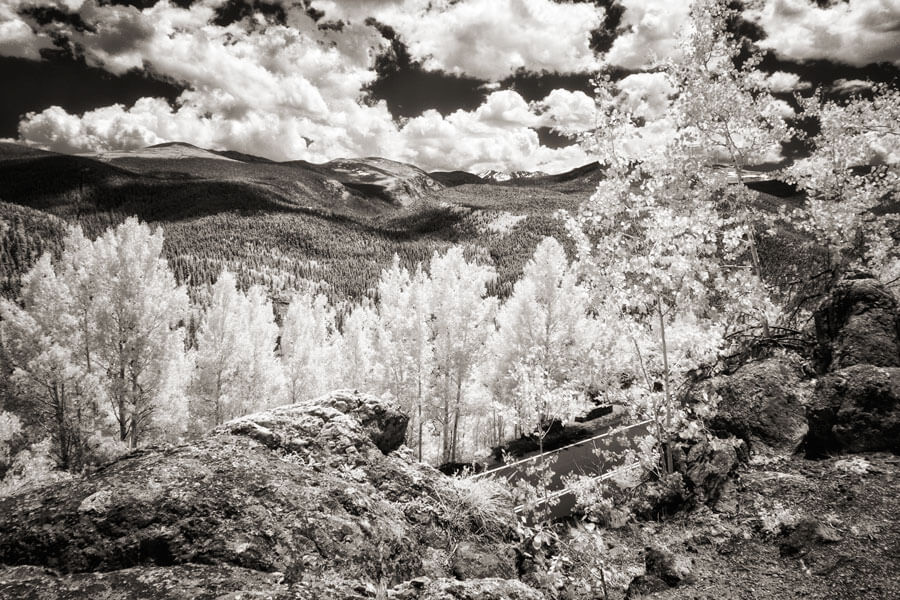More Infrared Photography Tips
If you missed the first installment of this series, you can read it here: Infrared Photography Tips.
Today’s Post by Joe Farace
Since infrared light is predominantly captured using your imaging chip’s red channel images can end up looking red (really magenta) no matter which standard color balance setting you choose. You’ll get the best results by setting a custom white balance for your camera. After my Panasonic Lumix G6 was converted, I went outside and used my green lawn as a white balance target.

Some converted IR cameras are not able to set an in-camera custom white balance. If your camera is like that you’ll need to shoot in RAW but I also have another suggestion that also works for people shooting IR with filters on non-converted cameras.
- Shoot in Monochrome mode. It’s that simple. No white balance needed, everything needed is right there on your LCD screen and your image file will be in glorious black & white.
- If the thought of shooting JPEG is anathema, the RAW images captured are going to exhibit a strong magenta cast Here’s what I do to solve that problem: I open the file in Adobe Camera Raw, ignore the White Balance pop-up menu, navigate to the HSL/Grayscale tab and click the Convert to Grayscale button. That will give you a nice black & white photographs You can then tweak ago using any of the settings under the Basic tab.
- Alternative approach: If you are shooting a bracketed series of images why not double-down and open the files using HDR Efex Pro and create a digital infrared HDR image. Many times the preview thumbnails show the image automatically converted to monochrome but you can always use the several B&W presets that plug-in provides or pick another that you like and move the saturation slider to zero.

Tip: Try infrared photography by having one of your old cameras that’s gathering dust converted to IR-only operation. You can save some time when converting your camera to infrared, by using the coupon code “farace” at LifePixel. Joe is the author of the out-of-print four-star “The Complete Guide to Digital Infrared Photography” that’s available used from Amazon.com.




